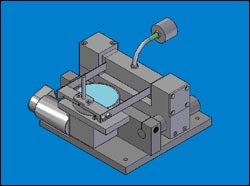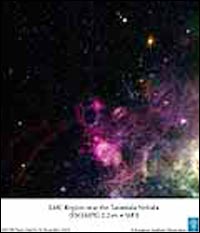Physics and Astronomy
This area deals with the fundamental laws and building blocks of nature and how they interact, the properties and the behavior of matter, and research into space and time and their structures.
innovations-report provides in-depth reports and articles on subjects such as astrophysics, laser technologies, nuclear, quantum, particle and solid-state physics, nanotechnologies, planetary research and findings (Mars, Venus) and developments related to the Hubble Telescope.

Ice study could stop people slip-sliding away
Going out and about in freezing conditions could become safer thanks to fundamental research at the University of Edinburgh into how we slip on ice.
Using funding from the Engineering and Physical Sciences Research Council (EPSRC) researchers at Edinburgh have built a device, known as a Tribometer, to measure the friction generated as different materials, such as rubber or metal, slip across a sample of ice. The Tribometer is designed to investigate how factors such as temperatur

EPS07 comes to the UK
Physicists across the North of England were rejoicing today at the news that they had been chosen to host a prestigious conference on Particle Physics in 2007.
’The conference is run every two years by the European Physical Society’, said Professor Roger Barlow, of Manchester University. ’They’ve just had their meeting at the CERN laboratory in Geneva. We persuaded them that our facilities and reputation, together with strong support from the many universities an

Caught in the Cobweb
Turbulent and Colourful LMC Region Imaged from La Silla The Tarantula Nebula is one of the most impressive views in the Southern sky, cf. ESO Press Photos 14a-g/02. Visible to the unaided eye in the Large Magellanic Cloud (LMC), a satellite galaxy of the Milky Way that is located in the direction of the southern constellation Doradus at a distance of about 170,000 light-years, this huge nebula is the prototype of what astronomers refer to as a “Giant HII region”. In this complex of

Nuclear-powered mission to Neptune could answer questions about planetary formation
In 30 years, a nuclear-powered space exploration mission to Neptune and its moons may begin to reveal some of our solar system’s most elusive secrets about the formation of its planets — and recently discovered ones that developed around other stars. This vision of the future is the focus of a 12-month planning study conducted by a diverse team of experts led by Boeing Satellite Systems and funded by NASA. It is one of 15 “Vision Mission” studies intended to develop concepts in the United State

Control circuit for future supercomputer to be produced in Finland
The circuit will improve the computational accuracy and efficiency of quantum computers operating at extremely low temperatures.
Quantum computers require an ambient temperature of approximately -273 degrees centigrade to function properly. The Technical Research Centre of Finland (VTT) is to build a control circuit for such a superconducting computer that will function at very low temperatures. Future quantum computers will be able to crack IT encryption codes and perform searche

Non Fire Yet But The Sensors Snap Into Action
Russian researchers offer a fundamentally new approach to the development of gas sensors for fire-prevention detecting devices. In contrast to already known ones, these sensors allow to detect unerringly fire occurrence at its earliest stage. However, this is not a single advantage of the innovation or a sole field of application.
Moscow scientists – specialists of the Institute of Molecular Physics (Russian Research Center) “Kurchatov Institute” have managed to teach fire-preven